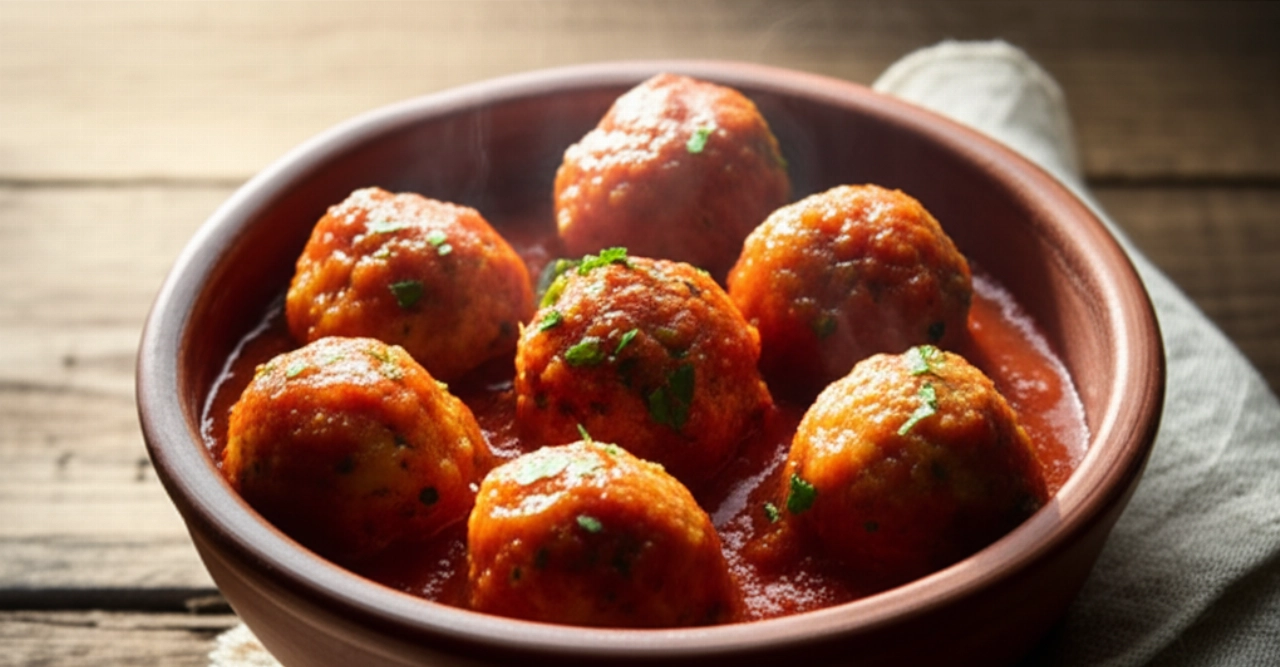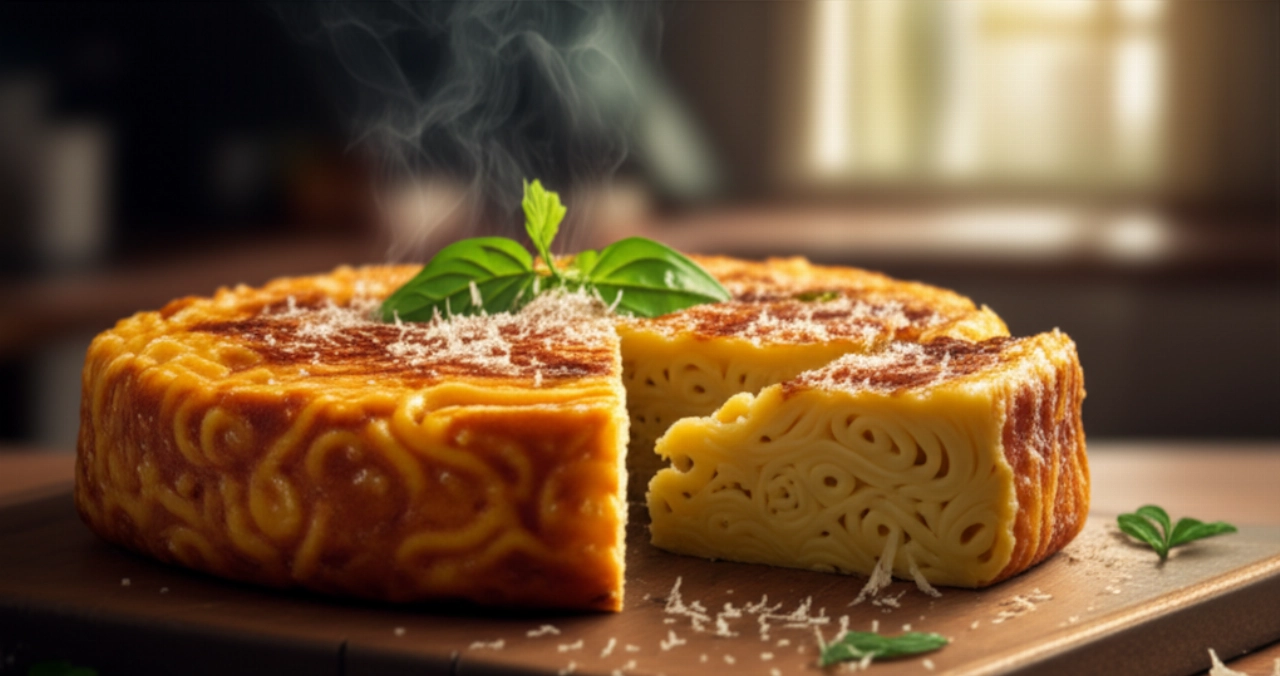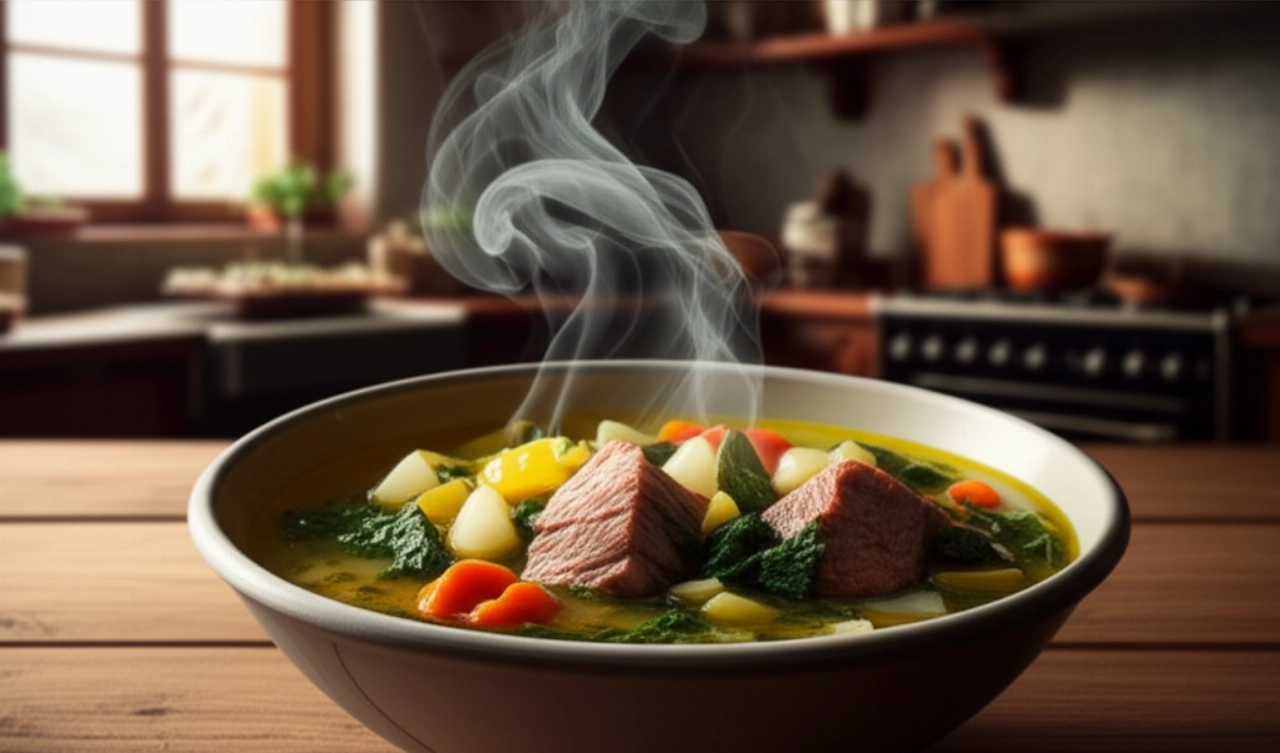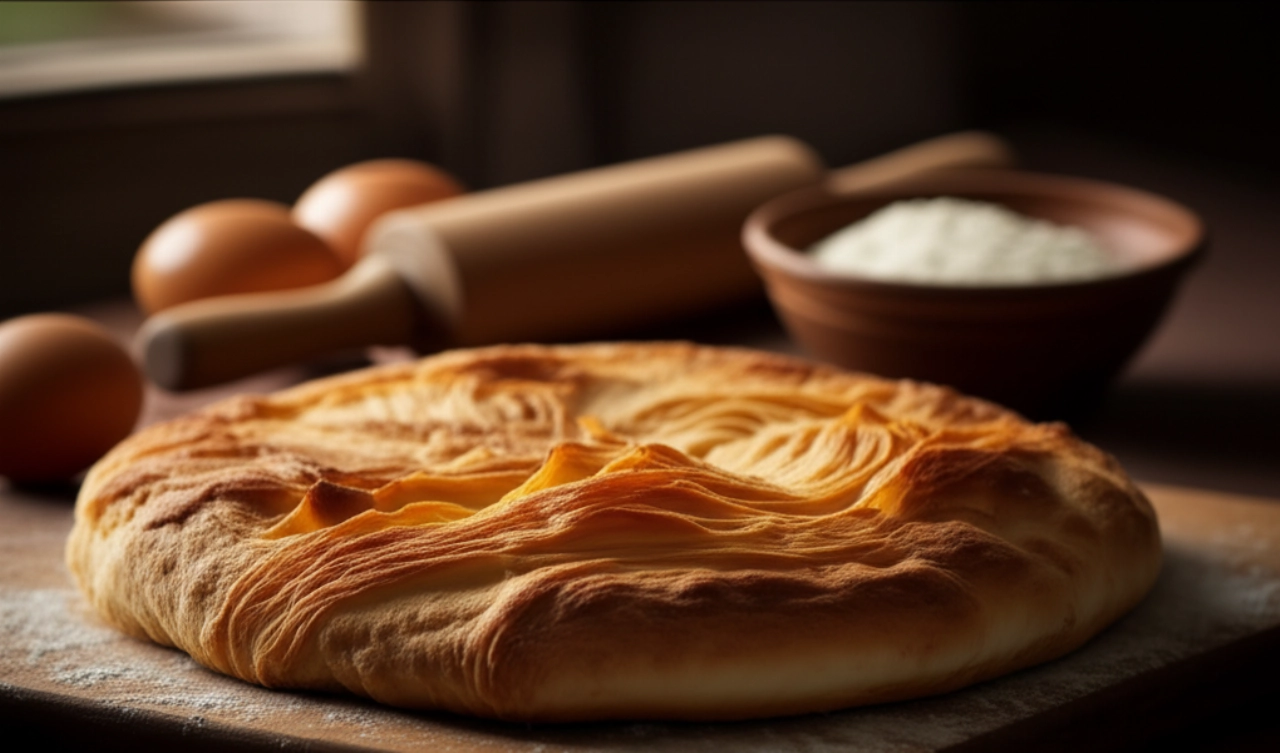There's something magical about bringing a cured meats and cheese board to the table. It's not just an appetizer; it's an invitation to conviviality, a sensory journey that tastes of tradition, celebration, and home. It's the beating heart of an aperitif with friends, the perfect prelude to a special dinner, or simply a way to pamper yourself with authentic flavors.
But how many times have you felt lost when faced with the choice? The fear of wrong pairings, of spending too much on products that don't complement each other, or of creating a dish that doesn't "speak" to the palate, that doesn't tell a story. Finding the perfect balance between flavors, textures, and colors can seem like a task for Michelin-starred chefs, and performance anxiety, especially when guests are present, is just around the corner.
Fear not! Here at Cerca Ricette, your trusted chef grandma, I reveal all the secrets to composing a board that is not just an appetizer, but an unforgettable sensory experience, a true triumph of flavors and aromas. Make yourself comfortable. On this page, you won't just find a list of ingredients, but the definitive guide, full of tricks and practical tips, to prepare the most delicious and balanced cured meats and cheese board of your life. Success is guaranteed, and every bite will be met with applause.

Perfect Harmony: The Secret to Your Foolproof Board
Our strategic corner, the promise I make to you today, is precisely this: PERFECT HARMONY. I won't just teach you how to arrange cured meats and cheeses on a plate, but how to create an orchestra of flavors, where each note harmonizes with the other, enhancing it. I will guide you step by step in choosing and pairing cured meats, cheeses, and accompaniments, to create a board that is an unforgettable sensory experience, without waste and with the certainty of impressing. No more 'random mix' effect; here you will learn to build a story of taste.
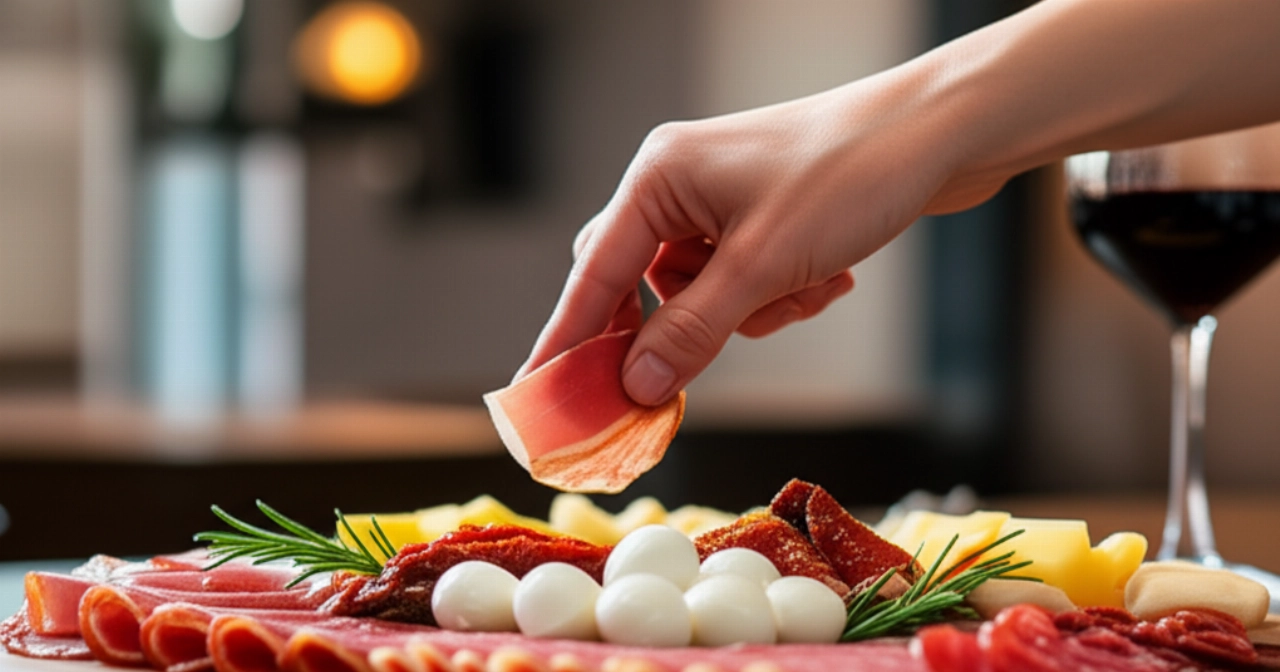
Smart Ingredients: The Choice That Makes the Difference
An exceptional board starts with exceptional ingredients. It's not about quantity, but the right quality and variety. Let's see together how to choose the protagonists of your masterpiece.
Cured Meats: Aromas and Tradition
- Prosciutto Crudo (enveloping sweetness): Choose a good Prosciutto di Parma or San Daniele. Its sweetness and melt-in-your-mouth texture are a hug for the palate. Slice it thin, almost transparent, to appreciate its delicacy.
- Salame (the decisive character): A Salame Felino or Salame Milano are excellent choices. They bring a spicier note and a firmer texture. Don't be afraid to dare with a spicy salami if you love bold flavors.
- Bresaola (elegant lightness): Perfect for balancing more intense flavors. Its delicacy and almost ferrous taste pair well with a drizzle of oil and Parmigiano shavings.
- Mortadella (unexpected softness): Although not always present on classic boards, a quality mortadella, thinly sliced, can surprise with its softness and unmistakable aroma.
Cheeses: A World of Textures and Flavors
Balance is key. Aim for 3-5 types of cheeses, varying in texture and aging:
- Fresh Cheeses (creaminess): A buffalo mozzarella, fresh ricotta, or burrata. They bring moisture and a milky note that cleanses the palate.
- Semi-aged Cheeses (versatility): A young Pecorino Sardo, a Tuscan Caciotta, a Taleggio. They have a more pronounced but not excessive flavor, and a soft but compact texture.
- Aged Cheeses (intensity): A Parmigiano Reggiano (24-36 months), a Grana Padano, or an aged Pecorino Romano. They are the champions of flavor, to be enjoyed in shavings or small cubes. Their saltiness and granular texture are unmistakable.
- Blue Cheeses (boldness): A sweet or spicy Gorgonzola. For the more adventurous palates, they offer an interesting contrast and a unique flavor.
Accompaniments: The Final Touch That Enhances
Never underestimate the power of accompaniments. They are what create the perfect harmony!
- Jams and Honeys: A fig jam, red onion jam, or chestnut honey pair divinely with aged and blue cheeses, creating an irresistible sweet-savory contrast.
- Fresh Fruit: Grapes (black and white), fresh figs, pears (especially Williams or Kaiser), apples. Their freshness and sweetness cleanse the palate and pair beautifully with almost all cheeses.
- Dried Fruit: Walnuts, almonds, dried dates. They add crunch and an earthy note.
- Bread and Focaccia: Not just any bread! Choose a good homemade sourdough bread, artisanal breadsticks, or a soft Roman focaccia. They are the perfect base for every tasting.
- Vegetables in Oil or Vinegar: Artichoke hearts, olives, bell peppers. They add an acidic note that balances richer flavors.

The 3 Mistakes Not to Make (and How to Avoid Them)
Even a seemingly simple board hides pitfalls. Here are the most common mistakes and how to avoid them for guaranteed success.
- Too Much Variety or Poor Quality: Don't fill the board with a thousand types of low-quality cured meats and cheeses. Better to have a few, but excellent ones. Grandma always said: “Less is more!”. Focus on 3-5 well-chosen cured meats and 3-5 cheeses.
- Lack of Balance: Don't present only strong or only delicate flavors. The most common mistake is to include only aged cheeses or only very flavorful cured meats. The secret is variety: one fresh cheese, one semi-aged, one aged; one sweet cured meat, one more flavorful, one lighter. This creates an interesting taste journey.
- Wrong Temperature: Serving cured meats and cheeses straight from the refrigerator is a sacrilege! Cold numbs flavors and textures. Take the ingredients out at least 30-60 minutes before serving (depending on room temperature). Cheeses should be soft to cut, and cured meats should release their aroma.
The Extra Touch: My Grandma's Advice
My grandma, with her country wisdom and love for things done well, always said that a board must be a feast for the eyes before it is for the palate. Her secret? The presentation. It wasn't just about arranging the ingredients, but about creating a picture. She always used a touch of fresh seasonal fruit – a bunch of grapes, a few pear slices – and a few sprigs of fresh rosemary or thyme. Not just for the aroma, but for the beauty, for that touch of nature that makes everything more inviting. And she never forgot a small jar of artisanal honey, perhaps chestnut honey, to pair with the more aged cheeses. This small gesture of care made all the difference, transforming a simple board into an edible work of art.
Let's Assemble Your Perfect Board Together: The Step-by-Step Guide
Now that we have all the secrets, let's get to work! Follow these steps and your board will be a guaranteed success.
- Choose the Base: Opt for a wooden or slate board, or a large, spacious platter. The surface should be wide enough to hold the ingredients without too much overlapping.
- Prepare the Ingredients:
- Cured Meats: Slice them just before serving, if possible, or ask your trusted butcher for a fresh cut. Arrange them in a fan shape, a rosette, or simply folded to create volume.
- Cheeses: Cut the cheeses in different ways to add visual interest: into cubes, shavings (for hard cheeses), slices (for semi-aged cheeses), or leave them whole if they are small (like a mozzarella). Remember to leave a knife for each type of cheese, especially for softer ones.
- Accompaniments: Arrange jams and honeys in small bowls. Fresh fruit can be cut into wedges or left whole (like grapes). Dried fruit and olives can be scattered or grouped.
- Create Visual Harmony: Start by arranging the cheeses, leaving space between them. Then add the cured meats, trying to alternate colors and textures. Fill the empty spaces with fruit, dried fruit, and small bowls of sauces. Don't be afraid to slightly overlap ingredients to create an abundant and inviting effect.
- Strategic Pairings: Place ideal pairings close to the ingredients they best complement. For example, honey near aged pecorino, pears near gorgonzola, figs near prosciutto crudo. This will guide your guests through the tasting.
- The Final Touch: Add a few sprigs of fresh aromatic herbs (rosemary, thyme) or a few mint leaves for a touch of color and aroma. A drizzle of quality extra virgin olive oil on some cheeses or bresaola will enhance the flavors.
Tips and Frequently Asked Questions about the Cured Meats and Cheese Board
Here are some of the most common questions I get asked, with grandma's answers so you're never left alone.
How many types of cured meats and cheeses should I include?
For a balanced and not overwhelming board, I recommend choosing 3-5 types of cured meats and 3-5 types of cheeses. The important thing is the variety of textures and flavors, not the quantity.
How do I store leftover board items?
If there are leftover cured meats and cheeses, wrap them individually in plastic wrap or parchment paper and store them in the refrigerator. Consume them within 2-3 days. Jams and honeys, if not contaminated, can be re-sealed and stored as usual.
Can I prepare the board in advance?
You can prepare part of the board in advance (cut harder cheeses, prepare sauce bowls), but it's always best to slice softer cured meats and cheeses just before serving to maintain their freshness and aroma. Remember to take the board out of the fridge at least 30 minutes before enjoying it.
Which wines to pair with a mixed board?
For such a varied board, a versatile wine is ideal. A good light and fruity red like a young Chianti, a Lambrusco (perfect with cured meats), or a structured white like a Vermentino or a Fiano di Avellino. If you love bubbles, a Franciacorta or a Dry Prosecco pair well with most ingredients.
What if I have vegetarian or vegan guests?
For vegetarian guests, you can create a separate board with only cheeses and accompaniments. For vegans, a board of grilled vegetables, hummus, olives, dried fruit, bread, and perhaps some plant-based cheese made from cashews or almonds will be much appreciated.
Your Masterpiece is Ready!
There you have it! Now you don't just have a recipe, but all the secrets to bringing a dish to the table that tastes of home, tradition, and love. A cured meats and cheese board is not just food; it's an experience, a moment of sharing that stays in the heart.
Don't be afraid to experiment with your tastes and preferences. Cooking is an act of creativity and a way to express yourself. But start with this solid foundation, and you'll see that applause will not be lacking, and your guests will ask you for the secret to such a perfect board.
Have you tried our guide to composing your perfect board? We are very curious to see your masterpiece! Leave a comment below, tell us how it went, or share a photo on Instagram by tagging @CercaRicette.it. If you loved the art of the board, you can't miss our homemade bread recipe to accompany it, or our guide to Italian wines for the perfect pairing!
